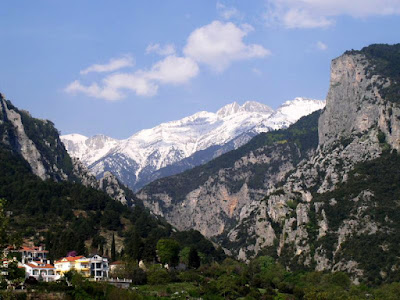Sean Carroll has a interesting set of four entires about the backwardness of the arrow of time and how it would appear. This is an interesting exercise for me on how perception about the current direction of the universe could have represented "the Egg before the chicken" scenarios.
Incompatible Arrows, I: Martin Amis
Incompatible Arrows, II: Kurt Vonnegut
Incompatible Arrows, III: Lewis Carroll
Incompatible Arrows, IV: F. Scott Fitzgerald
Chicken or Egg
 Illustration from Tacuina sanitatis, Fourteenth century See the Blog posting Incompatible Arrows
Illustration from Tacuina sanitatis, Fourteenth century See the Blog posting Incompatible ArrowsIt is important that one sees where Sean Carroll's mind has been and how the current article in Scientific Magazine reflects the writing in that article. You may read his current article but does one really understand it? You have to take in much more then just the article itself, and yes concepts are assumed here, that others might be on the same page, and again, this is, and has been, my mistake as I seemingly become cryptic I've elevated the correlations in mind.
What came before? Time, becomes asymmetric from some perfect order an this is a higher entropic valuation assigned to equilibrium that has to remain fixed in my mind. So, shall we call it symmetry breaking?
Having pointed out the context of "another universe" the very idea that time can run backwards in that other universe one is safe to consider such things by such appointment?:) S I introduce consciousness because by it's very nature , it will reveal the "mathematical framework" that arises from a "cognitive function" that resides there.
I know over at Stefan and Bee's place, we had talked about this quite a bit and this has induced the questions about time, and all the ideas and information shared, has created the wonder about this subject for me. Not that you shall forget that "symmetry breaking" is part of an assumption too, that what existed at one time has a more perfect substance to it, yet, how could the beginning and end become cyclical if we did not tie up both ends?
The title of this blog post was written because I believe it is possible for our consciousness to be able to go into the future, and while there, see the previews of what shall become an aspect of the soul in it's future developments, based on what it has done now.
I know that people like Bee are becoming bored to tears about Past lives, and the Afterlife, but the philosophy I am sharing is based on the picture of the early Egyptian history, and the Hall of Ma'at.
You did not know that as Plato I was privy to the Egyptian mysteries?:) Okay, just assume so, and once you can grasp the principal of "the heart and feather," Tell me then, how it can be applied to your life. The principles you hold. Then, you come back and tell me, that with this knowledge, why you cannot see the future written? An "assumption" detailed by an organizational ability in your own subconscious puts you into this room. A place and time, with which our apprehensions would dictate the outcome of measure, just by, the retention of being, and becoming.
Where is such a place? Other universes?:) Okay now how indeed such comparative features and a place to stand that I would speak contradictory to what Sean Carroll is saying and all of science? Crackpot possibly:)
 Kenn Brown-Scientific America
Kenn Brown-Scientific AmericaDoes Time Run Backward in Other Universes? by Sean Carroll
Among the unnatural aspects of the universe, one stands out: time asymmetry. The microscopic laws of physics that underlie the behavior of the universe do not distinguish between past and future, yet the early universe—hot, dense, homogeneous—is completely different from today’s—cool, dilute, lumpy. The universe started off orderly and has been getting increasingly disorderly ever since. The asymmetry of time, the arrow that points from past to future, plays an unmistakable role in our everyday lives: it accounts for why we cannot turn an omelet into an egg, why ice cubes never spontaneously unmelt in a glass of water, and why we remember the past but not the future. And the origin of the asymmetry we experience can be traced all the way back to the orderliness of the universe near the big bang. Every time you break an egg, you are doing observational cosmology.
It is easy then for the intellectual mind to be able to grasp, that while Sean has not seen this potential in regards to the "backward arrow of time in other universe" now contained in this one, I would say, that I am introducing this possibility currently, as a function not only of that past which has been written and recorded, but, of the future as well, basing this on the current values of the universe speedinng up.











